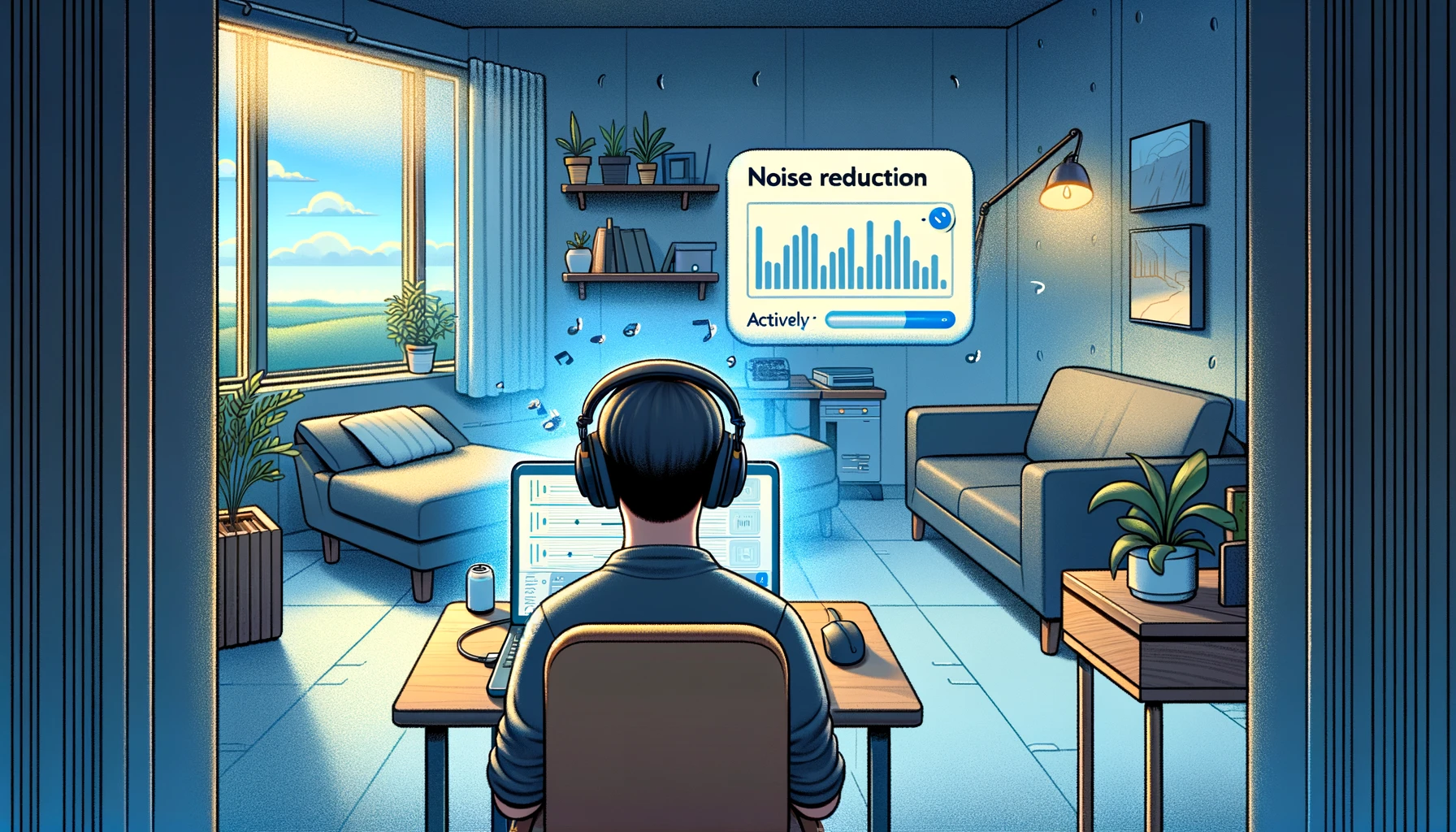Are you tired of listening to audio recordings that are filled with annoying background noise? Say goodbye to those distracting sounds and hello to crystal-clear audio with the help of these top-notch online tools. Whether you’re a podcaster, musician, or simply someone who enjoys high-quality sound, these nine noise removal tools are here to revolutionize your listening experience. So, get ready to immerse yourself in pristine audio like never before!
Introduction
In today’s digital age, crystal clear audio and video content is no longer a luxury—it’s a necessity. Whether it’s an online conference call, a captivating vlog, an engaging podcast, or a professionally produced film, noise-free, high-quality audio and video are expected. But real-world recording scenarios are often filled with unwanted background noise, from the hum of an air conditioner to the rustle of papers, which can distract your audience and reduce the effectiveness of your message.
If you’re looking for a quick solution, you can try our background noise removal online tool, or for more advanced noise reduction, our background noise removal AI. If you need to completely remove audio from a video, we have a tool for that as well.
To overcome these challenges, a range of online noise removal tools have been developed. These innovative platforms help us clean up our audio and video content, ensuring that our messages reach their intended audience as clearly and effectively as possible. But with so many tools available, selecting the right one for your needs can be a daunting task. In this article, we’ll guide you through the top 10 online noise removal tools, discussing their features, ease of use, cost, and much more
Why Remove Noise from Audio and Video?
Sound quality plays a crucial role in communication and overall user experience. Noise, often perceived as any unwanted sound, can drastically reduce the clarity of the message, causing frustration for listeners or viewers. It can also lead to miscommunication, as vital information can be obscured or lost amidst the noise.
From a viewer’s perspective, poor audio quality can lead to a negative impression of the content, regardless of its actual substance or the visual quality. In the case of instructional videos, webinars, or online meetings, background noise can even cause viewers to miss out on important information, defeating the purpose of the content.
What to Look for in an Online Noise Removal Tool
Choosing the right noise removal tool requires considering several factors:
- Ease of Use: A user-friendly interface and intuitive features are crucial, especially if you’re not an audio engineer. The tool should make the process of noise removal as simple as possible.
- Quality of Noise Removal: The tool should be effective in eliminating a wide range of noise types without affecting the quality of the original audio or video.
- Supported File Types: It should support various audio and video file formats. The more formats it supports, the more versatile the tool.
- Cost of Subscription Model: While there are free tools available, they may have limitations. Paid versions often offer more features and better noise removal quality. Consider your budget and the tool’s pricing model.
The remainder of this article will introduce you to our top picks for online noise removal tools, comparing them in terms of these key factors.
Top 10 Online Tools for Removing Noise
1. VEED
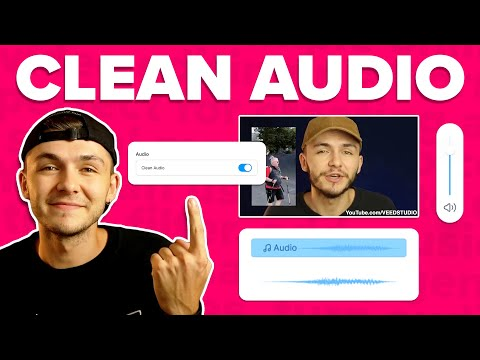
Overview and Unique Features
VEED is an easy-to-use, feature-rich online tool that offers more than just noise removal. It’s a full-fledged video editor designed for content creators, businesses, and professionals looking to enhance their videos’ overall quality.
Key features of VEED include:
- Noise removal
- Video trimming and cropping
- Subtitle addition and editing
- Video filters and effects
- Progress bar addition
How It Works
Using VEED for noise removal is a simple process:
- Upload your video or audio file to the platform.
- Select the ‘Audio’ tab, then click on ‘Clean Background Noise.’
- Adjust the level of noise reduction to your liking.
- Preview the changes, and if satisfied, click ‘Render’ to process the cleaned file.
- Once processed, download your file.
Pricing Model
VEED offers three tiers of pricing:
- Free: Limited features and includes a watermark.
- Pro ($12/month billed annually): Access to all features, including noise removal, no watermark, and priority support.
- Business ($30/month billed annually): All the Pro features plus team collaboration tools and API access.
Pros and Cons
Pros:
- User-friendly interface.
- Wide range of video editing tools besides noise removal.
- Allows editing directly in the browser, no software download is required.
Cons:
- The free version includes a watermark.
- High-quality video exports and noise removal are only available in the paid plans.
2. Podcastle

podcastle for Online Tools for Removing Noise
Overview and Unique Features
Podcastle is a versatile online tool specifically tailored for podcast creators, although it works well for any kind of audio editing. This tool is packed with features designed to help you produce high-quality, noise-free audio content.
Key features of Podcastle include:
- Noise and echo reduction
- Automated transcriptions
- Text-to-speech feature
- Multi-track editing
- Collaborative editing options
How It Works
Here’s a simple rundown of how to use Podcastle for noise removal:
- Upload your audio file to the platform.
- Click on the ‘Noise Reduction’ option in the editing interface.
- Podcastle will automatically reduce the noise in your audio. You can adjust the intensity of the noise reduction.
- Listen to the changes, and if you’re happy, save your audio.
Pricing Model
Podcastle offers three different pricing options:
- Free: Provides basic features with limitations.
- Pro ($9.99/month): Includes full access to all features, no watermark, and priority support.
- Team ($19.99/month): All the Pro features plus collaboration features to allow team editing.
Pros and Cons
Pros:
- User-friendly and intuitive interface.
- Excellent for podcast creators due to specific features like transcription and text-to-speech.
- Allows multi-track editing.
Cons:
- The free version has limitations on features and length of audio.
- More tailored towards podcast creators, might lack video-specific features.
3. Audacity
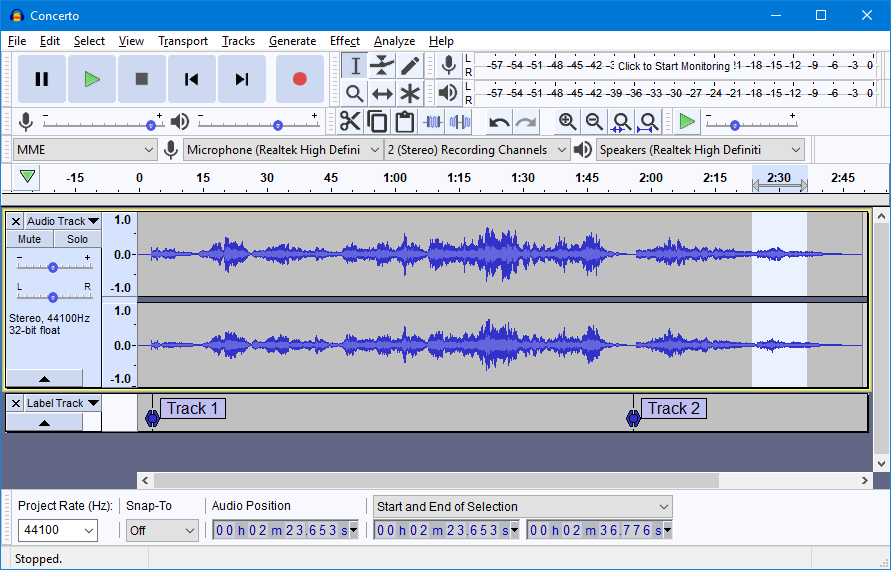
Overview and Unique Features
Audacity is a powerful, open-source, and completely free audio editing tool that professionals and amateurs alike widely use. It is known for its robust set of features that allow you to record, edit, mix, and enhance audio files.
Key features of Audacity include:
- Broad spectrum noise removal
- Recording capabilities
- Sound level manipulation (envelope tool)
- Multitrack mixing
- Wide range of effects (amplify, fade in/out, echo, etc.)
How It Works
Removing noise with Audacity involves the following steps:
- Open your audio file with Audacity.
- Select a portion of the audio that contains only the noise you want to remove.
- Go to the ‘Effect’ menu and choose ‘Noise Reduction.’
- In the pop-up window, click ‘Get Noise Profile.’
- Then select the entire audio clip (Ctrl+A or Command+A for Mac).
- Go back to ‘Noise Reduction’ in the ‘Effect’ menu and adjust the noise reduction, sensitivity, and frequency smoothing parameters as needed, then click ‘OK.‘
Pricing Model
Audacity is completely free to use. It’s an open-source project, which means it’s developed by a community of volunteers and can be downloaded and used by anyone at no cost.
Pros and Cons
Pros:
- Completely free with no limitations or watermarks.
- Robust set of editing features.
- Capable of handling a wide range of noise types.
Cons:
- Steeper learning curve compared to other tools due to its broad range of features.
- Lacks an intuitive, modern interface.
- No online version is available; it requires software download and installation.
4. Descript

Overview and Unique Features
Descript is an innovative online tool that allows you to edit audio and video files uniquely—by editing text. This tool is not only a noise remover but a comprehensive editing platform with numerous advanced features.
Key features of Descript include:
- Overdub (Create a synthetic voice of yourself)
- Multitrack recording
- Automatic transcription
- Screen recording
How It Works
Here are the steps to remove noise using Descript:
- Import your audio or video file to Descript.
- The platform will automatically transcribe the audio.
- Click on the ‘Studio Sound’ option to remove background noise.
- Adjust the settings as necessary, and you can immediately notice the reduction in background noise.
Pricing Model
Descript offers a variety of pricing options:
- Free: Provides basic features with 3 hours of transcription.
- Creator ($12/month billed annually): Includes unlimited automatic transcription, screen recording, and more.
- Pro ($24/month billed annually): All the Creator features plus advanced editing features and priority support.
Pros and Cons
Pros:
- Unique text-based editing interface.
- Rich set of advanced features.
- High-quality noise removal and transcription.
Cons:
- Might be overkill for users who only need basic noise removal.
- Advanced features and unlimited transcription were only available in paid plans.
5. Audio Denoise
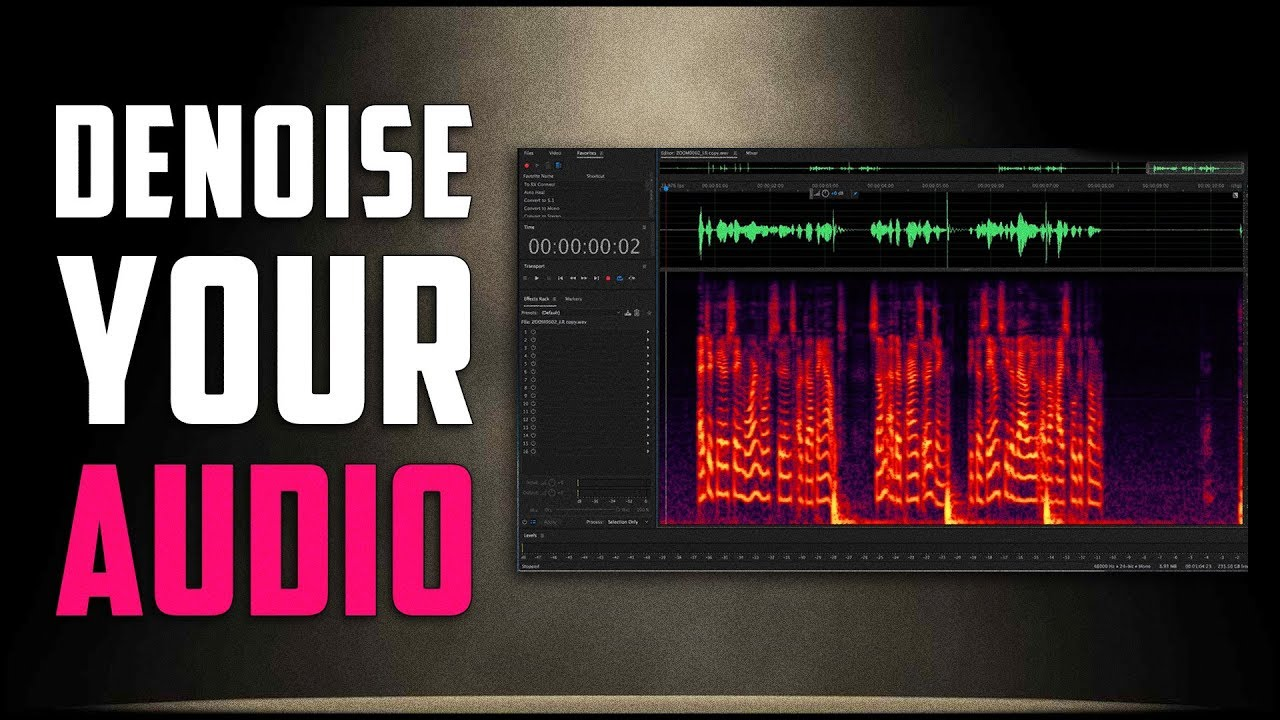
Overview and Unique Features
Audio Denoise is a straightforward online tool specifically designed for one purpose: reducing background noise in audio files. It’s the perfect tool for users who want a simple, no-frills solution to their noise problems.
Key features of Audio Denoise include:
- Online background noise reduction
- Intensity adjustment for noise removal
- Support for multiple audio formats
How It Works
Using Audio Denoise is a straightforward process:
- Upload your audio file to Audio Denoise.
- Use the slider to adjust the intensity of noise reduction.
- Click on ‘Process’ and the tool will reduce the noise based on your settings.
- Download the cleaned audio file.
Pricing Model
Audio Denoise is a completely free tool to use. There are no premium versions or subscriptions, but donations to support the service are accepted and appreciated.
Pros and Cons
Pros:
- Easy to use with a minimalist interface.
- Completely free.
- Effective for basic noise removal tasks.
Cons:
- Limited features compared to other tools.
- No video support, audio files only.
- The quality of noise reduction may not be as high as in more sophisticated tools.
6. Runway
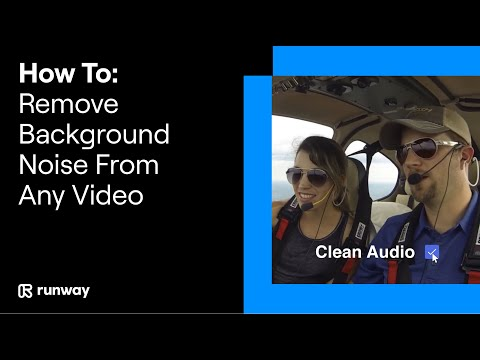
Overview and Unique Features
Runway is an AI-based audio and video editing tool that excels in many areas, including noise removal. This tool uses advanced machine learning techniques to offer a variety of creative solutions.
Key features of Runway include:
- AI-driven noise reduction
- Video style transfer
- Green screen feature
- AI image synthesis
How It Works
To use Runway for noise reduction:
- Upload your audio or video file to Runway.
- Navigate to the ‘Sound’ tab and select the ‘Denoise’ option.
- Adjust the strength of the denoise filter as required.
- Save and export your cleaned file.
Pricing Model
Runway offers a credit-based model where different operations cost a certain number of credits. Users can purchase packs of credits with prices starting from $5 for 100 credits.
Pros and Cons
Pros:
- Advanced AI-driven tools.
- Offers a variety of creative solutions beyond noise reduction.
- The credit-based model allows you to pay for what you use.
Cons:
- Might be expensive for heavy users.
- The interface might be complex for beginners.
7. LALAL.ai
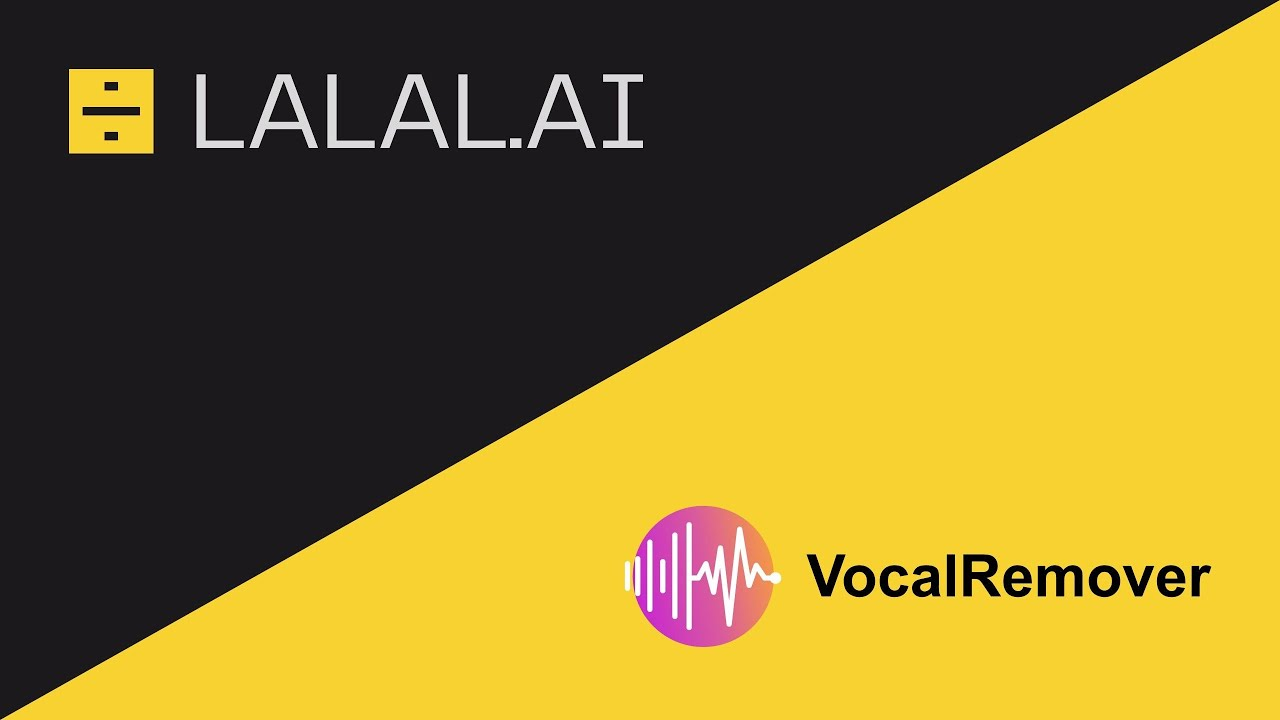
Overview and Unique Features
LALAL.ai is an advanced AI-powered audio separation tool that excels in splitting tracks into vocals and instrumentals, as well as reducing noise.
Key features of LALAL.ai include:
- AI-driven track separation
- High-precision noise reduction
- Supports various audio formats
How It Works
To use LALAL.ai for noise reduction:
- Upload your audio file to LALAL.ai.
- Choose the noise reduction option.
- LALAL.ai will automatically reduce the noise in your audio.
- You can then download the cleaned audio file.
Pricing Model
LALAL.ai operates on a pay-per-use model with prices starting at $10 for 3 hours of processed audio. They also offer a free tier that provides 10 minutes of processing.
Pros and Cons
Pros:
- High-precision noise reduction.
- Excels in track separation.
- Pay for what you use model.
Cons:
- No video support.
- More specialized towards track separation.
8. Kapwing
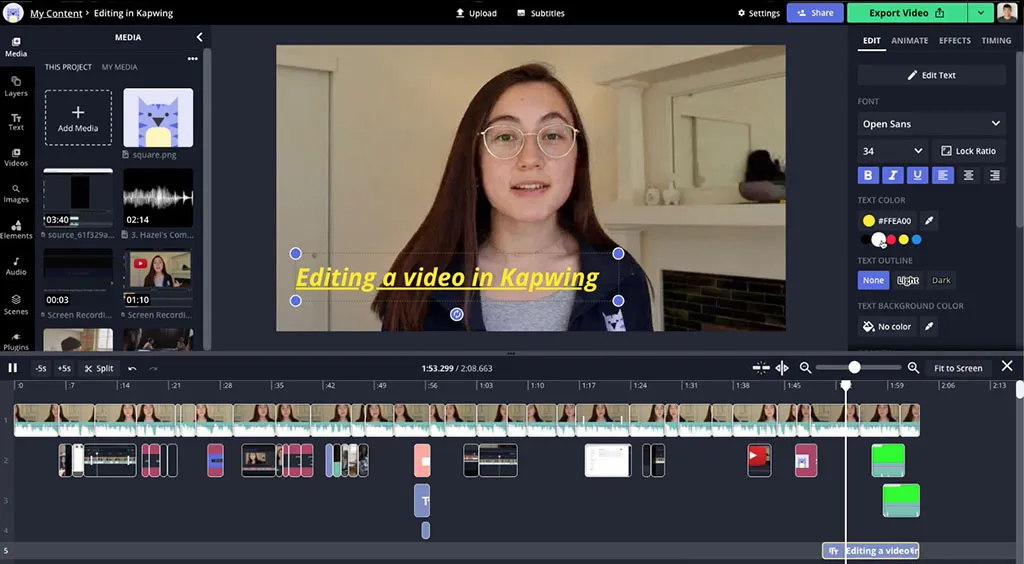
Overview and Unique Features
Kapwing is an online multimedia editing tool offering a range of features from video editing to meme creation. One of its valuable features includes the audio denoise function.
Key features of Kapwing include:
- Video and audio editing
- Noise removal
- Subtitle generator
- Meme creation
How It Works
Removing noise with Kapwing is easy:
- Upload your video or audio file to Kapwing.
- Select ‘Detab’ from the top menu.
- Select ‘Denoise video.’
- Choose the strength of noise reduction.
- Process your file and download the result.
Pricing Model
Kapwing operates a freemium model:
- Free: Provides basic features with a watermark.
- Pro ($20/month): Includes all features, no watermark, and priority support.
Pros and Cons
Pros:
- A comprehensive suite of multimedia editing tools.
- User-friendly interface.
- Online tool; no download required.
Cons:
- The free version includes a watermark.
- Noise removal may not be as advanced as dedicated audio editing tools.
9. RX 10 by iZotope
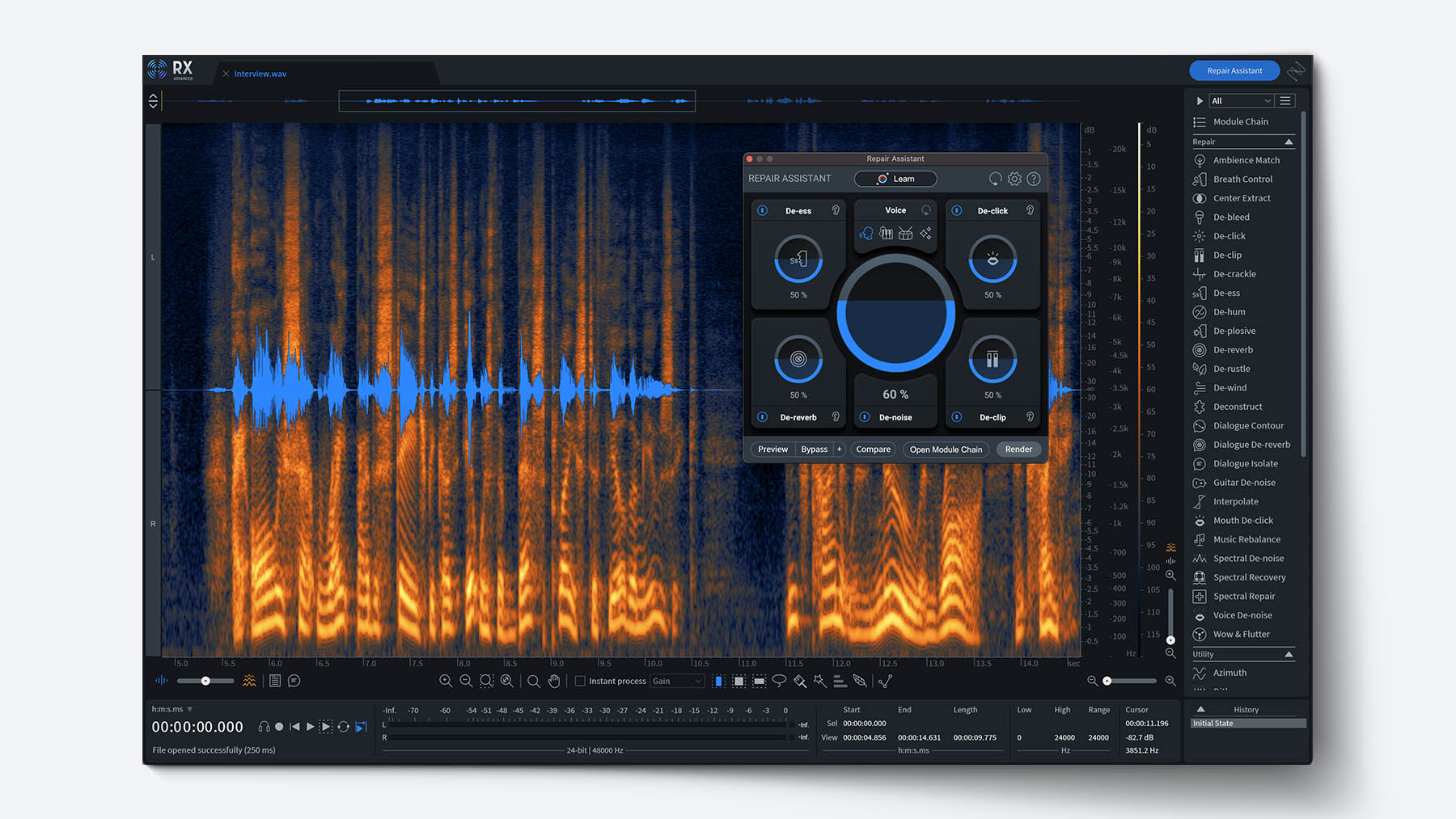
Overview and Unique Features
RX 10 by iZotope is a professional-grade audio restoration software that offers a range of advanced features, including exceptional noise removal capabilities.
Key features of RX 10 include:
- Advanced repair and restoration features
- Spectral editing
- Standalone audio editor and plug-in
- Machine learning capabilities
How It Works
Using RX 10 to remove noise involves the following steps:
- Open your audio file in RX 10.
- Select a portion of the audio that contains only the noise.
- Click on the ‘Learn’ button in the Denoise module.
- Adjust the reduction settings to your preference.
- Process the file.
Pricing Model
RX 10 offers different versions at varying prices:
- RX 10 Elements: Basic restoration package ($129)
- RX 10 Standard: More advanced tools ($399)
- RX 10 Advanced: Full feature set ($1199)
Pros and Cons
Pros:
- Industry standard for audio repair and restoration.
- Advanced spectral editing capabilities.
- High-quality noise reduction.
Cons:
- Expensive compared to other tools.
- May be overkill for simple tasks.
- Requires software installation.
How to Use Online Noise Removal Tools
The process of using online noise removal tools can vary slightly from one to another. However, the basic steps remain largely similar:
- Upload the Audio/Video File: Open the website of your preferred tool. Look for an option to upload or import your file. This is usually displayed prominently on the site.
- Select the Noise Removal/Denoise Option: Once your file is uploaded, find the tool’s noise removal feature. It could be listed as ‘Denoise,’ ‘Noise Reduction,’ ‘Remove Noise,’ etc.
- Adjust Settings: Some tools allow you to adjust the level of noise removal. This is often represented as a slider or a set of options. More noise removal can make the audio clearer, but too much can distort the sound.
- Process the File: Once you’ve adjusted the settings to your satisfaction, find the option to process or apply the noise removal. The tool will then work its magic, and your file will be noise-free.
- Download the File: Finally, there’s usually an option to download your cleaned-up file. Save it to your device, and it’s ready to use!
These tools are capable of handling various types of noise, such as white noise (a consistent background hiss or static), variable background noise (such as traffic or conversation), and sudden loud noises.
Tips for Preventing Noise in Recordings
Prevention is always better than cure. While noise removal tools can work wonders, the best audio quality comes from clean, noise-free original recordings. Here are some tips:
- Choose a Quiet Environment: Try to record in a quiet, controlled environment. Avoid places with a lot of echoes, traffic noise, or people talking.
- Use a Good Microphone: Invest in a decent microphone. It doesn’t need to be expensive, but higher-quality mics will capture less background noise.
- Position the Microphone Correctly: Place the mic as close to the sound source as possible to capture the clearest sound.
- Use Pop Filters and Windshields: These can help reduce unwanted sounds like wind noise or plosive sounds in speech (such as ‘p’ or ‘b’ sounds).
Case Studies
Many professionals have successfully used these noise removal tools to enhance their work’s audio quality. Podcasters often use tools like Audacity or Descript to clean up their audio and ensure a smooth listening experience for their audience. Video editors regularly use tools like VEED or Kapwing to remove background noise from their footage, enhancing the viewer experience. Even musicians have found these tools useful for cleaning up live recordings and practice sessions.
Take, for example, a YouTuber who films in a busy city environment. By using a tool like RX 10, they could significantly reduce the background noise in their videos, making their voice clearer and easier to understand for viewers. Similarly, a podcaster recording from home may use a tool like Podcastle to remove the sound of their air conditioning, resulting in a more professional-sounding podcast. These tools have proven invaluable in ensuring clear communication in our increasingly digital world.
Expert Opinions
To gain further insights into the power and use of these tools, we reached out to sound engineers and industry experts. Andrew Bell, a renowned audio engineer, praised the advances in noise removal technologies, saying, “The strides in AI and machine learning have changed the game, allowing for more precise and efficient noise removal.”
Many professionals recommend a combination of tools for the best results. Maria Scott, an experienced podcast producer, told us, “I often use Audacity for the heavy lifting and fine-tune with Podcastle. The key is to experiment and find the workflow that suits you best.”
The consensus among experts is clear: while prevention is the best strategy, noise removal tools provide a valuable resource for creating high-quality audio and video content.
Effect of Noise Removal on Various Types of Content
In a world saturated with digital content, good sound quality can make the difference between a viewer clicking away and sticking around.
For podcasts, clear audio is crucial. Listeners can be easily distracted or annoyed by persistent background noise or poor audio quality.
In vlogs and interviews, noise reduction can focus attention on the speaker rather than the environment. It can make content more professional and less tiring to watch.
For webinars and e-learning, good audio is essential for understanding and retention of information. Noise reduction can improve clarity and reduce distractions, leading to a more productive learning environment.
Improved sound quality not only enhances user experience but also increases audience engagement and retention rates. High-quality sound ensures your message is heard clearly and can even increase perceived credibility and professionalism.
Future of Noise Removal Technologies
The future of noise removal technologies looks exciting. With advancements in AI and machine learning, we can expect even more powerful and precise tools.
Researchers are continually improving algorithms to recognize and isolate different types of noise, from the hum of a refrigerator to the bustle of a crowd. We’re also seeing more intuitive and user-friendly interfaces that make these powerful tools accessible to everyone, not just audio professionals.
As more businesses and individuals create digital content, the demand for these tools is likely to grow. We can expect to see ongoing improvements and exciting innovations in this field.
Whether you’re a seasoned content creator or just starting, staying informed about these trends can help you stay ahead of the curve and ensure your content always sounds its best.
Ethical Considerations and Fair Use
Noise removal, like all forms of content editing, comes with ethical considerations. When you’re modifying your work, the decisions are yours to make. However, when editing others’ works, it’s crucial to respect their creative control and intellectual property rights.
The concept of “fair use” is a legal doctrine that allows limited use of copyrighted material without the owner’s permission. It generally applies to purposes such as commentary, criticism, news reporting, teaching, and research. Modifying an audio or video file for these purposes may be considered fair use, but it’s essential to understand the specifics of the law in your region.
Remember, altering the quality of a recording might change the creator’s intended experience. It’s always a good idea to reach out for permission when possible, particularly if you intend to distribute the edited work.
Alternatives to Online Tools
While online tools offer convenience and accessibility, there are alternative hardware solutions for noise removal. Noise-canceling microphones, soundproof rooms, and professional recording environments can provide excellent audio quality at the source.
However, these solutions often involve a significant investment and may not be feasible for everyone. They also lack the flexibility and ease of use of online tools, which can be accessed anywhere, anytime, and often at a fraction of the cost.
Ultimately, the best choice depends on your specific needs, budget, and level of expertise. It’s always wise to explore all options before making a decision.
Interactive Section
We’d love to hear about your experiences with noise removal! Have you tried any of the tools mentioned in this article? Perhaps you have a go-to tool that wasn’t mentioned, or some hard-earned advice you’d like to share?
Feel free to leave a comment below with your recommendations and best practices. By sharing our knowledge, we can help each other create better audio and video content. Let’s start a conversation and learn from one another. Your input is valuable to us and the community.
Sure! Here’s a basic comparison table:
Tool NameKey FeaturesSupported File TypesPricing ModelProsConsVEEDSimple UI, AI-poweredMost Audio/Video formatsFreemium; Pro: $18/monthUser-friendly, EffectiveLimited free usePodcastleAdvanced Editing Features, AI transcriptionMost Audio formatsFreemium; Premium: $12.99/monthIdeal for PodcastersLimited Video SupportAudacityOpen Source, Comprehensive ToolsMost Audio/Video formatsFreePowerful, VersatileSteep Learning CurveDescriptText-based Editing, AI toolsMost Audio/Video formatsFreemium; Pro: $15/monthInnovativeAdvanced Features require ProAudio DenoiseFast, Easy-to-useMost Audio formatsFreeEasy, QuickLimited FeaturesRunwayAI-based, Real-timeMost Audio/Video formatsFreemium; Pay-as-you-goAdvanced AIMay Require More Processing PowerLALAL.AISplit tracks, AI-poweredMost Audio formatsPay-as-you-goAccurate SplittingNo Video SupportKapwingEditing Suite, SubtitlesMost Audio/Video formatsFreemium; Pro: $20/monthComprehensiveLimited Free UseRX 10Professional Grade, DetailedMost Audio/Video formatsTrial; Standard: $299Highly PreciseExpensive, Complex
Conclusion
In today’s digital world, where content creation and communication have taken the online route, achieving high-quality audio and video has never been more essential. Online noise removal tools play a crucial role in enhancing your content’s quality, ensuring your message is delivered clearly, and providing a smooth user experience.
Through our comprehensive exploration of the top 9 online noise removal tools, we’ve journeyed through the myriad features, pricing models, and unique selling points of each. Whether you’re creating podcasts, vlogs, interviews, or webinars, these tools offer various capabilities to handle different noise types and help in delivering clear, crisp sound.
Yet, as we’ve learned, these tools are not one-size-fits-all. They each have their strengths and shortcomings, and what works best often depends on your specific needs and circumstances. This is why we encourage you to try these tools, experiment with their features, and discover what works best for you.
In the rapidly evolving landscape of noise removal technologies, staying updated on the latest trends and advancements is critical. So too is understanding the ethical considerations surrounding their use, particularly when editing others’ works.
